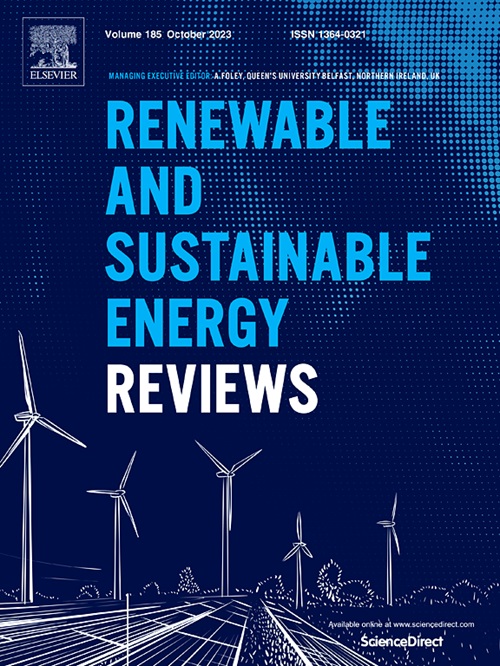生物废物原料的现状、发展和可持续性:当前进展综述
IF 16.3
1区 工程技术
Q1 ENERGY & FUELS
引用次数: 0
摘要
为利用自然环境而改变自然环境已导致世界50%以上的原始森林退化,凸显了人类活动对全球生态系统的深刻影响。自1961年以来,世界耕地面积扩大了约13%;然而,自那时以来,世界人口翻了一番,我们只能依靠1961年一半的土地来生产粮食。包括土地和水在内的自然资源的迅速枯竭,强调了可持续能源生产的必要性。确定生物柴油等可持续能源至关重要,特别是在人类土地利用已经消灭了地球上一半的森林和农业用地由于人口扩张而持续减少的情况下。废食用油是一种易得、廉价且广泛分布的生产生物柴油的原料。废弃食用油是一种潜在的资源,可以立即解决世界对产生更多可用能源的需求。本文综述了生物柴油生产的传统方法、强化工艺和各种催化剂,以及它们的优缺点。这篇综述深入研究了生物柴油生产的优化,包括对工艺参数的彻底检查,如甲醇/油的摩尔比、催化剂浓度、反应温度、反应时间和搅拌速度,以及它们对生物柴油产量的影响。动力学,热力学,和能量消耗的酯交换反应,以及火用和能量分析涵盖。本文还介绍了生命周期分析和环境影响评价。从总体上看,利用废食用油生产生物柴油是一种更清洁、更经济的压缩点火发动机替代燃料。本文章由计算机程序翻译,如有差异,请以英文原文为准。
Status, developments, and sustainability of biowaste feedstock: A review of current progress
Modification of natural environments for the purpose of their utilisation has led to the degradation of more than 50 % of the world's original forests, highlighting the profound influence of human actions on global ecosystems. The world's cultivated land area has expanded by ∼13 % since 1961; however, with the world population doubling since then, we can only rely on half as much land as in 1961 for food production. The rapid exhaustion of natural resources, including land and water, emphasises the necessity for sustainable energy generation. Identifying sustainable energy sources such as biodiesel is critical, particularly when human land use has eradicated half of the planet's forests and agricultural lands are persistently diminishing due to population expansion. Waste cooking oil is a readily available, inexpensive, and widely distributed raw material for biodiesel production. Waste cooking oil is a potential source that can immediately solve the world's needs to generate more useable energy. This review article offers a thorough overview of biodiesel production using conventional methods, intensification processes, and various types of catalysts, along with their advantages and disadvantages. This review delves into optimisation of biodiesel production, including a thorough examination of process parameters such as the methanol/oil molar ratio, catalyst concentration, reaction temperature, reaction time, and stirring speed, and their effects on the biodiesel yield. The kinetics, thermodynamics, and energy consumption of the transesterification reaction, as well as exergy and energy analysis are covered. This article also presents the life cycle analysis and environmental impact assessment. On the whole, the production of biodiesel from waste cooking oil is a cleaner and economical alternative fuel for compression ignition engines.
求助全文
通过发布文献求助,成功后即可免费获取论文全文。
去求助
来源期刊

Renewable and Sustainable Energy Reviews
工程技术-能源与燃料
CiteScore
31.20
自引率
5.70%
发文量
1055
审稿时长
62 days
期刊介绍:
The mission of Renewable and Sustainable Energy Reviews is to disseminate the most compelling and pertinent critical insights in renewable and sustainable energy, fostering collaboration among the research community, private sector, and policy and decision makers. The journal aims to exchange challenges, solutions, innovative concepts, and technologies, contributing to sustainable development, the transition to a low-carbon future, and the attainment of emissions targets outlined by the United Nations Framework Convention on Climate Change.
Renewable and Sustainable Energy Reviews publishes a diverse range of content, including review papers, original research, case studies, and analyses of new technologies, all featuring a substantial review component such as critique, comparison, or analysis. Introducing a distinctive paper type, Expert Insights, the journal presents commissioned mini-reviews authored by field leaders, addressing topics of significant interest. Case studies undergo consideration only if they showcase the work's applicability to other regions or contribute valuable insights to the broader field of renewable and sustainable energy. Notably, a bibliographic or literature review lacking critical analysis is deemed unsuitable for publication.
 求助内容:
求助内容: 应助结果提醒方式:
应助结果提醒方式:


